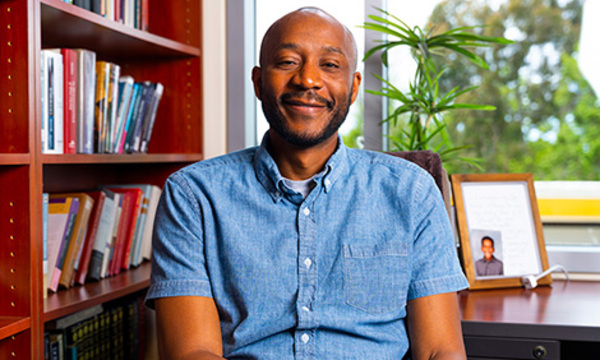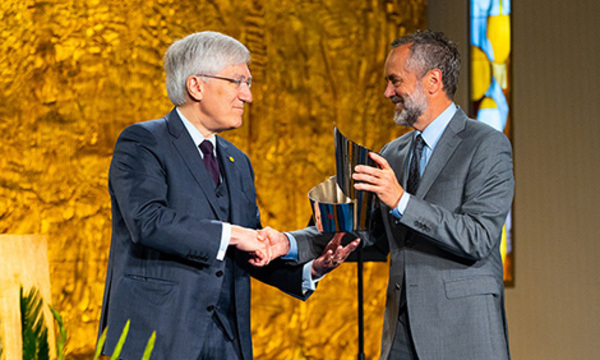
On an early September morning in 2011, Steve Grove strapped on his bicycle helmet and set out for a familiar ride around the Illinois farm where he’d grown up. He hadn’t gone far when the speeding driver struck him from behind. Ten days later he awoke in an Indiana hospital room, not knowing where he was or what had happened.
“My skull was cracked, my helmet was in eight pieces, I had multiple broken ribs and I was bleeding internally,” Grove said. “I have absolutely no memory of that day or the actual event or the day before, but I’ve been told they didn’t think I was going to make it.”
Today, after two years of therapy and after 100 doctors appointments, Grove has regained most of his cognitive abilities. But his brain injury and loss of memory has left him with a number of social struggles — struggles he is now working to overcome with the help of the Brain Rehabilitation and Injury Network (B.R.A.I.N.), a nonprofit organization in Southern California that advocates for brain injury survivors and their caretakers.
Headed by founders Susan (’70) and Jerry (’69, D.Min ’97) Rueb, B.R.A.I.N. offers a range of services for traumatic brain injury (TBI) survivors like Grove — everything from occupational therapy to caretaker training classes for the loved ones who care for survivors. But more importantly, B.R.A.I.N. gives TBI survivors a place to build relationships with people who have experienced similar life-altering injuries. Weekly meetings, called Friends of Brain Injury (FBI), are classes geared towards helping survivors continue to live their lives as normally as possible.
No one wears nametags at the weekly support groups. There are no labels and no stigmas.
Instead, the group’s focus is on building a community of survivors, volunteers and caretakers who are dedicated to the life-long process of healing and understanding.
“I feel comfortable here, but I’m not comfortable in crowds and around people,” said Grove, who attends weekly meetings and therapy sessions along with more than 50 other TBI survivors at the organization’s headquarters in Cypress, Calif. “No one is judging you here. You know you’re not going to be criticized — you feel safe.”
A Place for Survivors
For Jerry, a Biola trustee, and Susan Rueb, the journey to launching B.R.A.I.N. began with their own heartbreaking experiences of the scarcity of aid and support available to people affected by brain injuries.

In 1975, Susan gave birth to a daughter, Kristin, after a difficult and rushed delivery. As Kristin grew, she was diagnosed as a problem child, a schizophrenic and possibly autistic. The Ruebs tried various treatments and medications, only to see their daughter end up self-medicating and engaging in substance abuse. It wasn’t until age 31 that she was finally diagnosed as having a brain injury in her frontal lobes, Susan said.
“She was diagnosed properly through a brain imaging scan and they found the brain injury, probably from the rushed forceps, in her frontal lobes, which provides executive function, decisions, planning, cause and effect, and consequence — she had none of those,” Susan said. “It was a very tough, tough ordeal, but God was so faithful to us, giving us insight. We were always asking the Lord, ‘What is next?’”
What was next for the Ruebs was starting a rehabilitation center for other TBI survivors like their daughter. In 2007, the Ruebs launched B.R.A.I.N. and began hosting meetings in their home and at Cornerstone Church in Long Beach, Calif., where Jerry serves as head pastor. As the meetings grew, Susan said she knew they needed a permanent space where the organization could house its offices, meetings and therapy sessions.
In July 2012, the organization moved to an industrial building in Cypress, just 20 minutes from Biola. Now with their larger meeting space, B.R.A.I.N. has expanded its services to offer weekly meetings to not just TBI survivors but also members of the military who have suffered from TBIs and post-traumatic stress disorder.
“A lot of these people have been in car accidents, motorcycle accidents, have sports injuries, strokes and aneurysms,” said Susan, who serves as B.R.A.I.N.’s president. “And now they’re all receiving healing after they’ve been in the hospital. They’ve gone through rehab and now they get therapeutic massages, cognitive therapy, occupational therapy and reading and writing classes.”
The group support is especially important for survivors, who can often feel isolated after a brain injury, she said.
“They’re thrust into being alone,” she said. “They sit at home alone because they don't get the therapy they need to keep them going. We want them to sense and feel how great it is to come into a group.”
Friends and Confidants
Building meaningful relationships is a key part to a TBI survivor’s recovery process. In addition to the group meetings, Brain Cells — a friendship program that pairs a volunteer with a TBI survivor — enables volunteers to build more personal relationships with the survivors. Establishing that one-on-one relationship between a survivor and a volunteer takes time and patience, according to Megan Barnette, a junior communications disorders student at Biola and a B.R.A.I.N. volunteer.

“If they need help getting ready for an interview or if they need someone to take them to the grocery store because they can’t drive, you’re their helper when they need it,” Barnette said. “But you’re also their friend.”
Like Grove, many TBI survivors lose memories of their identity, meaning the road to recovery for survivors can be marked by confusion, frustration and difficulty. Because brain injuries can result in both physical and mental disabilities, TBI survivors still struggle to come to terms with their new limitations even after months of therapy, Barnette said.
“With any injury that causes a loss — whether it’s physical limitations or memory — there’s always a grief process, and they need to come to terms with it,” Barnette said. “[B.R.A.I.N.] is a group of people that all understand their limits and their strengths. A lot of the times with the games that we have during meetings, it’s to challenge them and help them improve. We know it’s going to be hard for them but we want them to improve as much as they can, in any way that they can.”
Barnette, whose grandfather suffered a TBI during the Vietnam War, said she wished there had been an organization like B.R.A.I.N. to help her grandfather recover and help her grandmother learn how to best help him through his recovery process.
Like Barnette, several other B.R.A.I.N. volunteers are Biola communications disorders students who heard about the organization through the university. The students play a key role in the organization, acting as confidants for the TBI survivors.
Getting a brain injury survivor to open up about their injury is another step on the road to recovery, according to Madison Salcido, a junior communications disorders student. As a volunteer, Salcido said she doesn’t just show up to the weekly meetings but participates in the classes and engages in conversations with the survivors.

“Those are my absolute favorite moments, where you hear about the trials that these people have been through, and yet, the joy that exudes from them as they share is overwhelmingly powerful and a huge testament to God’s grace and peace in their lives,” Salcido said. “We aren’t there to monitor or do any real logistical stuff; we are there to build relationships, support and encourage one another as we talk about traumatic brain injuries and how to move forward.”
Hope for the Future
In the past five years, the B.R.A.I.N. team — therapists, volunteers and office staff — has grown from just Susan to a paid staff of six therapists and instructors, along with office staff and a large team of volunteers, enabling the organization to reach more TBI survivors.
The organization is now in the midst of its five-year plan to raise funds for a “dream campus,” Susan said. The envisioned campus would house diagnostic and therapeutic clinics and temporary housing for adult TBI survivors. Having a dedicated campus would enable TBI survivors from outside of California to come to B.R.A.I.N. for therapy and group meetings, and it would centralize treatments for TBI survivors like Grove and the Ruebs’ daughter, Kristin.
Meanwhile, Grove said his life has returned to a level that he never thought he’d reach again. By regaining the abilities to walk, drive and even have conversations, Grove represents more than a B.R.A.I.N. success story. He represents a hope that other TBI survivors have for a future where their injuries don’t define or confine them.
“I’ve worked very hard on my cognitive abilities, and I’m doing very well in those,” Grove said. “I just keep at it — it’s not easy. You can understand a broken arm without it happening to you, but understanding a brain injury is difficult. I’ve got the invisible wound."
 Biola University
Biola University.jpg)

